Search Result
Results for "
Acetaminophen cyp450 Inhibitors
" in MedChemExpress (MCE) Product Catalog:
11
Isotope-Labeled Compounds
| Cat. No. |
Product Name |
Target |
Research Areas |
Chemical Structure |
-
- HY-B0725S
-
|
|
Histamine Receptor
Cytochrome P450
|
Neurological Disease
|
|
Doxepin-d3 (hydrochloride) is a deuterium labeled Doxepin Hydrochloride. Doxepin hydrochloride is an orally active tricyclic antidepressant. Doxepin hydrochloride is a potent and selective histamine receptor H1 antagonist. Doxepin hydrochloride is also a potent CYP450 inhibitor and significantly inhibits CYP450 2C19 and 1A2[1][2].
|
-
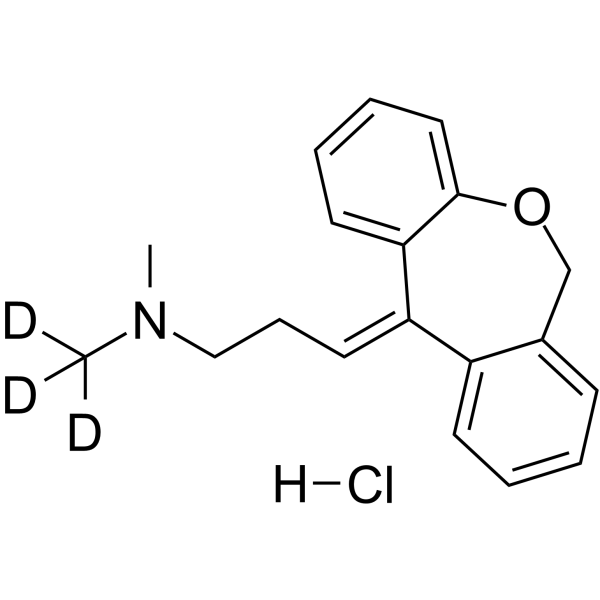
-
- HY-153671
-
|
|
Others
|
Infection
|
|
4'-Methyl-β-naphthoflavone is a metabolite of Naphthoflavones (benzoflavones) in fungal. Naphthoflavones are activators or inhibitors of CYP-450 .
|
-
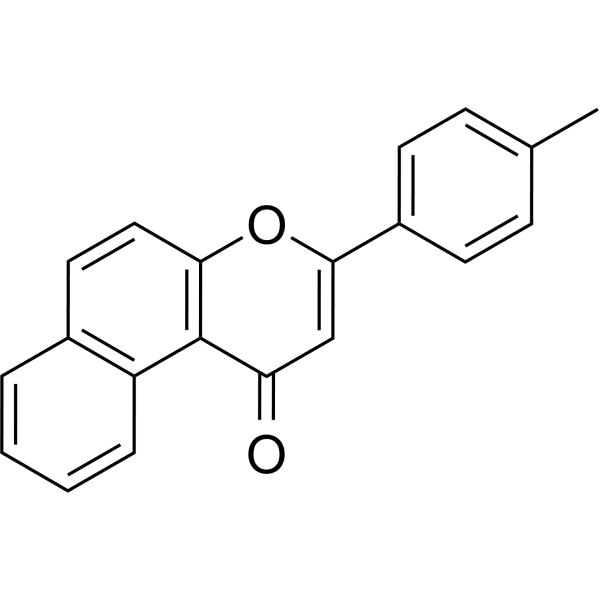
-
- HY-133091
-
|
7-O-Ethylumbelliferone
|
Cytochrome P450
|
Others
|
|
7-Ethoxycoumarin is a substrate for cytochrome P450(CYP450) and has been used in the functional characterization of various CYPs[1].
|
-
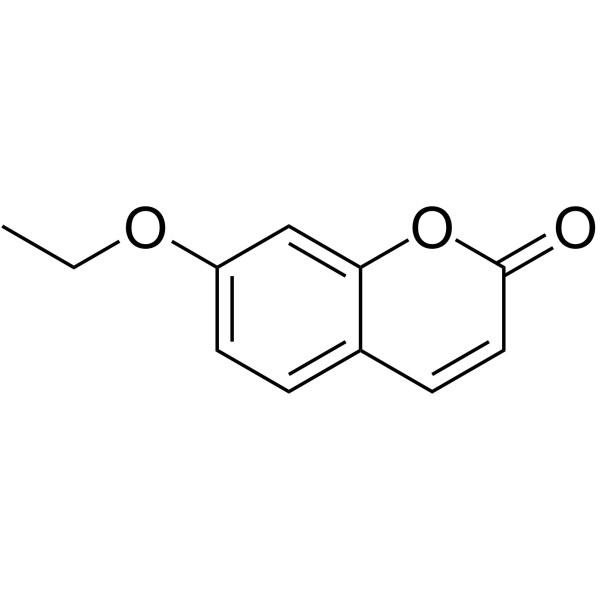
-
- HY-157170
-
-
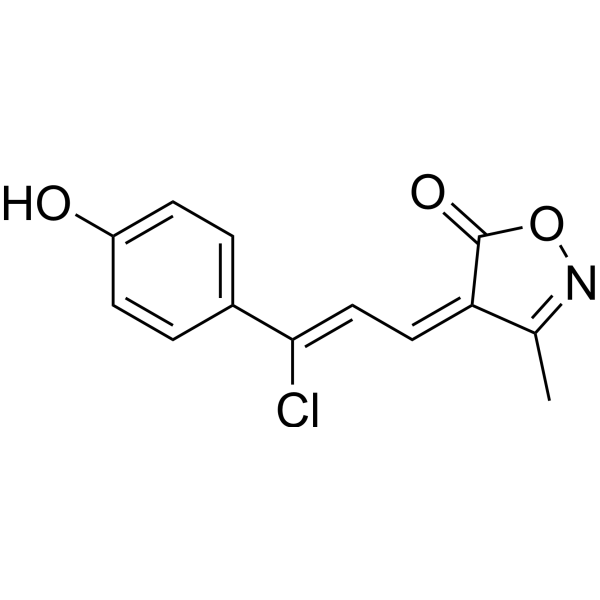
-
- HY-130550
-
-
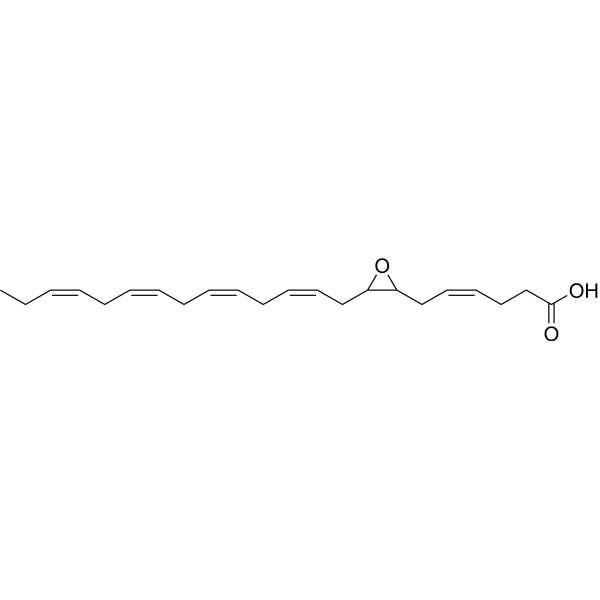
-
- HY-145546
-
|
|
Cytochrome P450
|
Metabolic Disease
|
|
14(15)-EpETE is the epoxide of cytochrome P450 (CYP450) and is involved in the regulation of vascular tone and renal function .
|
-
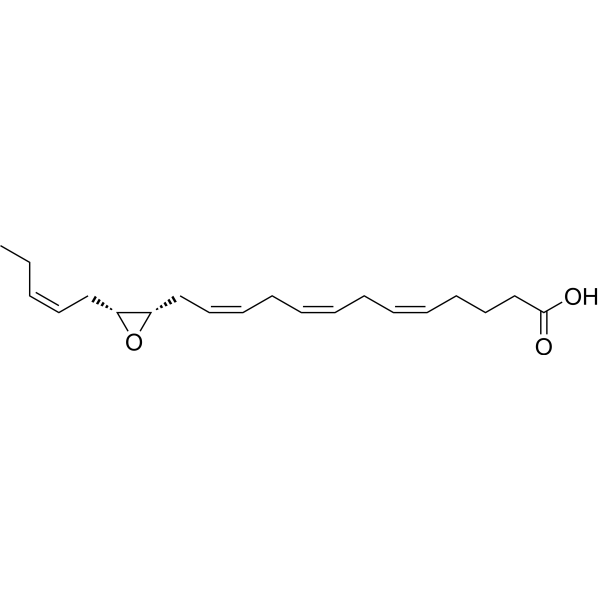
-
- HY-133091S
-
|
|
Cytochrome P450
Isotope-Labeled Compounds
|
Others
|
|
7-Ethoxycoumarin-d5 is deuterium labeled 7-Ethoxycoumarin. 7-Ethoxycoumarin is a substrate for cytochrome P450(CYP450) and has been used in the functional characterization of various CYPs[1].
|
-
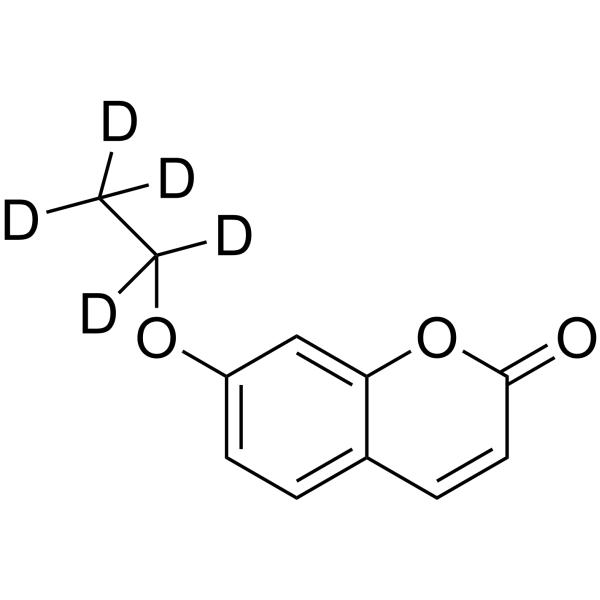
-
- HY-130219
-
|
|
Endogenous Metabolite
|
Others
|
|
18-HETE (compound 3) is a monooxygenase metabolite of cytochrome P450 (CYP450).18- HETE consists of arachidonic acid bearing a hydroxy substituent at position 18 .
|
-
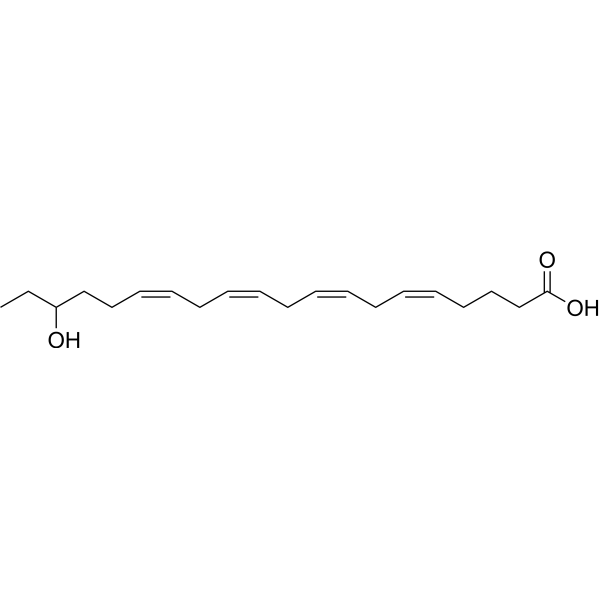
-
- HY-B0725
-
|
|
Histamine Receptor
Cytochrome P450
|
Neurological Disease
Cancer
|
|
Doxepin hydrochloride is an orally active tricyclic antidepressant agent. Doxepin hydrochloride is a potent and selective histamine receptor H1 antagonist. Doxepin hydrochloride is also a potent CYP450 inhibitor and significantly inhibits CYP450 2C19 and 1A2 . Doxepin inhibits reuptake of serotonin and norepinephrine as a tricyclic antidepressant .. Doxepin has therapeutic effects in atopic dermatitis,chronic urticarial,can improve cognitive processes, protect central nervous system .. Doxepin has also been proposed as a protective factor against oxidative stress ..
|
-
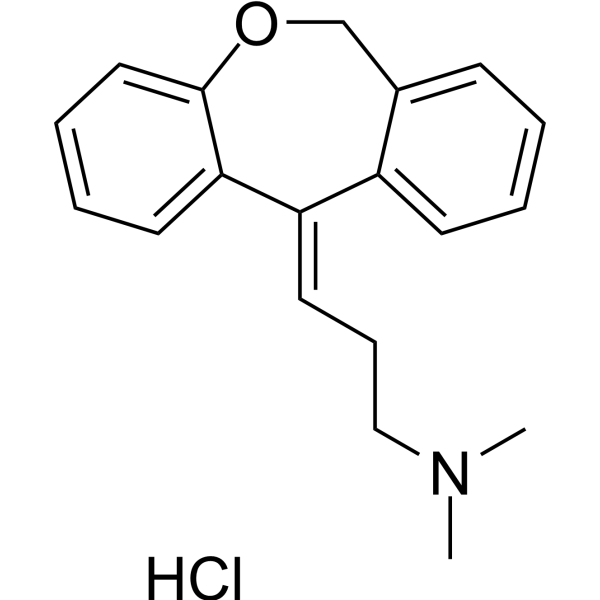
-
- HY-109040
-
|
VT-1129
|
Fungal
Cytochrome P450
|
Infection
|
|
Quilseconazole (VT-1129) is a potent, orally active fungal Cyp51 (lanosterol 14-α-demethylase) inhibitor, binds tightly to cryptococcal CYP51, but weakly inhibits humans CYP450 enzymes .
|
-

-
- HY-124527
-
HET0016
2 Publications Verification
|
Cytochrome P450
|
Cardiovascular Disease
|
|
HET0016 is a potent and selective 20-hydroxyeicosatetraenoic acid (20-HETE) synthase inhibitor, with IC50 values of 17.7 nM, 12.1 nM and 20.6 nM for recombinant CYP4A1-, CYP4A2- and CYP4A3-catalyzed 20-HETE synthesis, respectively. HET0016 also is a selective CYP450 inhibitor, which has been shown to inhibit angiogenesis and tumor growth .
|
-
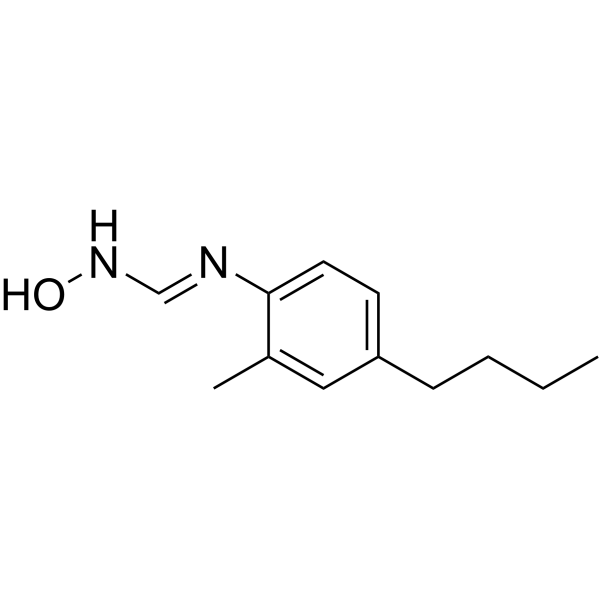
-
- HY-148907
-
|
|
Biochemical Assay Reagents
|
Cancer
|
|
CS640 is a selective inhibitor of calmodulin-dependent kinases. CS640 inhibits CaMK1D, CaMK1B, CaMK1A, CaMK1G, PIP5K1C, MEK5, RIPK4 and MLK3 with IC50 values of 0.08, 0.03, 0.001, 0.001, 11.2, 0.025, 5.69 and 2.75 μM, respectively. CS640 also shows inhibitory effects to CYP450 2C9 and CYP450 2C19 with IC50 values of 6 and 10 μM, respectively .
|
-
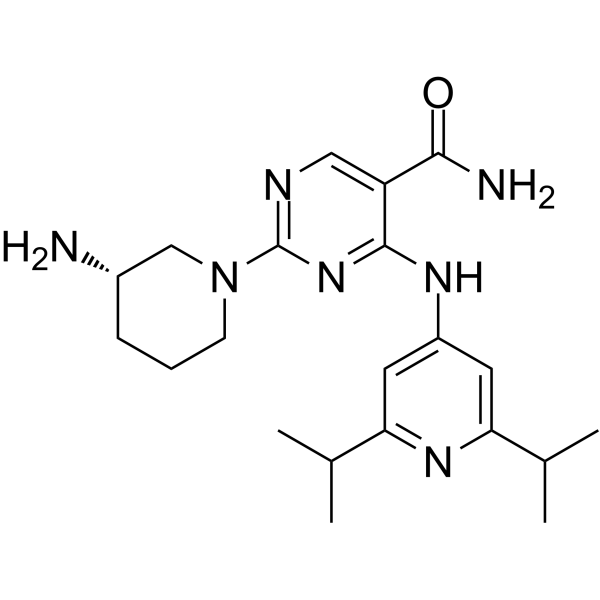
-
- HY-115493
-
|
|
CXCR
|
Others
|
|
TIQ-15 is a potent CXCR4 antagonist with an IC50 value of 6 nM for CXCR4 Ca 2+ flux. TIQ-15 inhibits CYP450 2D6 with an IC50 value of 0.32 μM .
|
-

-
- HY-N1407
-
|
|
|
|
|
Polygalaxanthone III is extracted from polygala tenuifolia wild, has inhibitory effect towards CYP450 enzyme. Polygalaxanthone III inhibits chlorzoxazone 6-hydroxylation catalyzed by CYP2E1 with an IC50 of 50.56 μM .
|
-
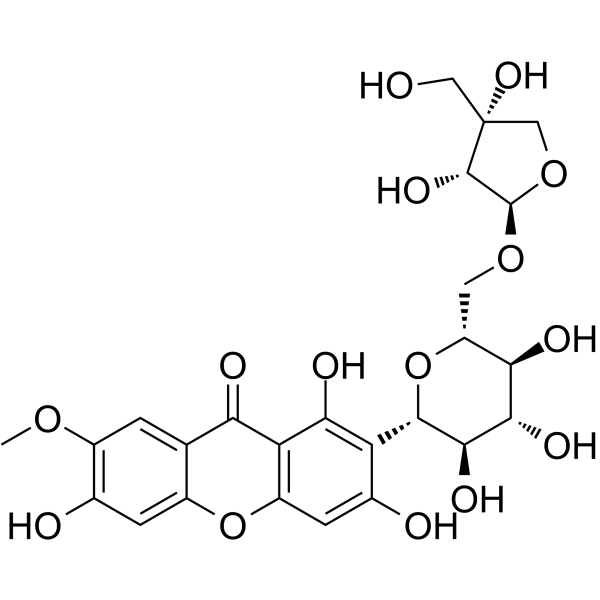
-
- HY-B0725R
-
|
|
Histamine Receptor
Cytochrome P450
|
Neurological Disease
Cancer
|
|
Doxepin (Hydrochloride) (Standard) is the analytical standard of Doxepin (Hydrochloride). This product is intended for research and analytical applications. Doxepin hydrochloride is an orally active tricyclic antidepressant agent. Doxepin hydrochloride is a potent and selective histamine receptor H1 antagonist. Doxepin hydrochloride is also a potent CYP450 inhibitor and significantly inhibits CYP450 2C19 and 1A2 . Doxepin inhibits reuptake of serotonin and norepinephrine as a tricyclic antidepressant .. Doxepin has therapeutic effects in atopic dermatitis,chronic urticarial,can improve cognitive processes, protect central nervous system .. Doxepin has also been proposed as a protective factor against oxidative stress ..
|
-
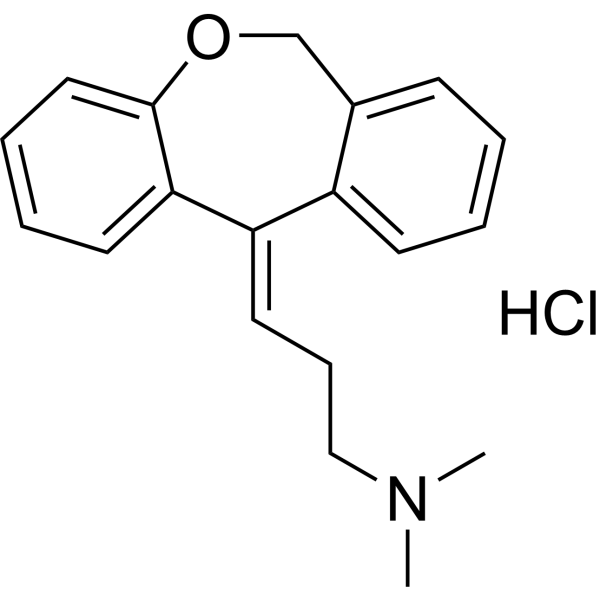
-
- HY-113482
-
|
1β-OH-DCA
|
Endogenous Metabolite
Cytochrome P450
|
Metabolic Disease
|
|
1β-Hydroxydeoxycholic acid (1β-OH-DCA), a secondary bile acid, is a CYP3A biomarker. Deoxycholic acid is specifically metabolized into 1β-Hydroxydeoxycholic acid by CYP3A4 and CYP3A7 using recombinant human CYP450 enzymes .
|
-
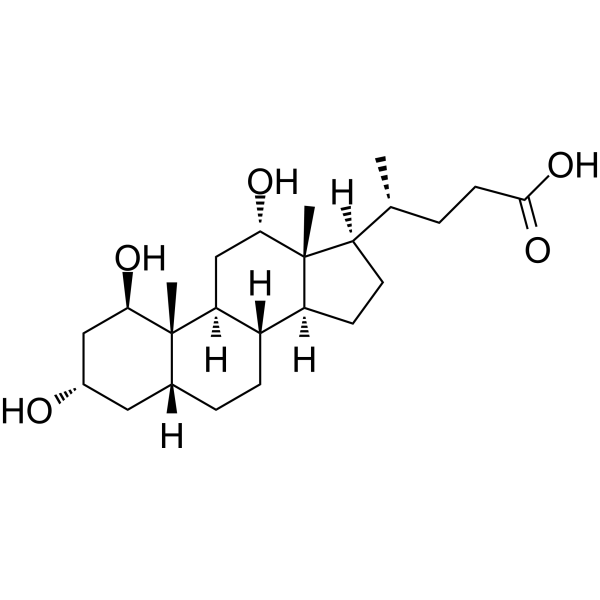
-
- HY-12594
-
|
ABT-450; Veruprevir
|
HCV Protease
HCV
SARS-CoV
|
Infection
|
|
Paritaprevir (ABT-450) is a potent, orally active and antiviral non-structural protein 3/4A (NS3/4A) protease inhibitor with EC50s of 1 and 0.21 nM against HCV 1a and 1b, respectively. Paritaprevir is also a SARS-CoV 3CL pro inhibitor with an IC50 of 1.31 μM. Paritaprevir is metabolized primarily by cytochrome P450 (CYP) 3A. The plasma concentration and half-life of Paritaprevir can be enhanced by Ritonavir (a CYP450 inhibitor) .
|
-
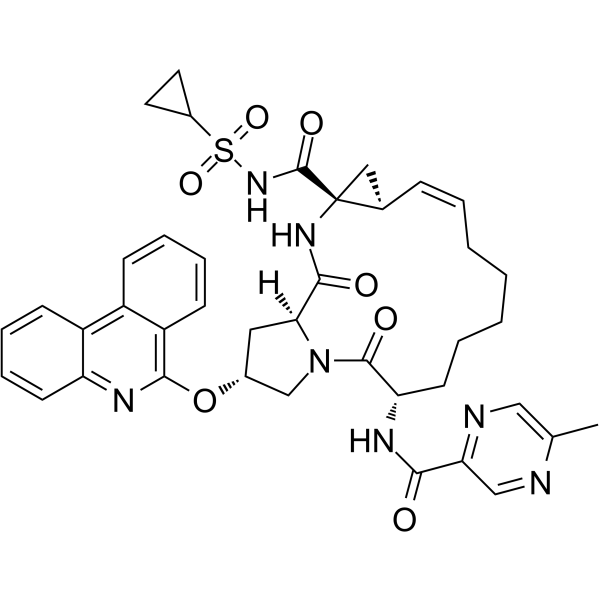
-
- HY-12594A
-
|
ABT-450 dihydrate; Veruprevir dihydrate
|
HCV Protease
HCV
SARS-CoV
|
Infection
|
|
Paritaprevir (ABT-450) dihydrate is a potent, orally active and antiviral non-structural protein 3/4A (NS3/4A) protease inhibitor with EC50s of 1 and 0.21 nM against HCV 1a and 1b, respectively. Paritaprevir dihydrate is also a SARS-CoV 3CL pro inhibitor with an IC50 of 1.31 μM. Paritaprevir dihydrate is metabolized primarily by cytochrome P450 (CYP) 3A. The plasma concentration and half-life of Paritaprevir dihydrate can be enhanced by Ritonavir (a CYP450 inhibitor) .
|
-
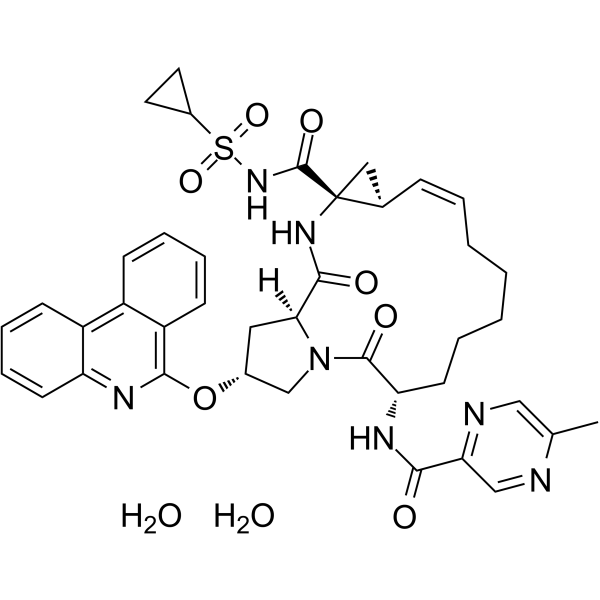
-
- HY-B0653A
-
|
(S)-(-)-Bupivacaine monohydrochloride
|
Sodium Channel
Ferroptosis
|
Neurological Disease
Cancer
|
|
Levobupivacaine hydrochloride ((S)-(-)-Bupivacaine monohydrochloride) is a long-acting amide local anaesthetic. Levobupivacaine hydrochloride exerts anaesthetic and analgesic effects through reversible blockade of neuronal sodium channel. Levobupivacaine hydrochloride can inhibit impulse transmission and conduction in cardiovascular and other tissues, possessing certain cardiac and CNS toxicity. Levobupivacaine hydrochloride is metabolized by hepatic cytochrome P450 (CYP450) enzymes in vivo. Levobupivacaine hydrochloride can also induce ferroptosis by miR-489-3p/SLC7A11 signaling in gastric cancer .
|
-
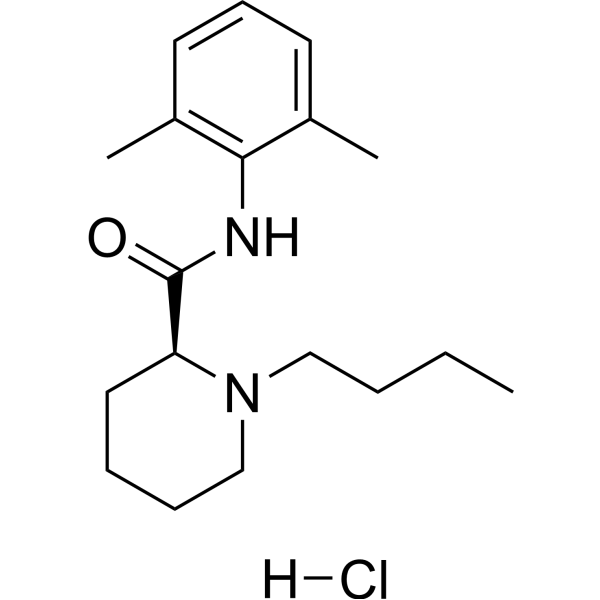
-
- HY-B0653
-
|
(S)-(-)-Bupivacaine
|
Sodium Channel
Ferroptosis
|
Neurological Disease
Cancer
|
|
Levobupivacaine ((S)-(-)-Bupivacaine) is a long-acting amide local anaesthetic. Levobupivacaine exerts anaesthetic and analgesic effects through reversible blockade of neuronal sodium channel. Levobupivacaine can inhibit impulse transmission and conduction in cardiovascular and other tissues, possessing certain cardiac and CNS toxicity. Levobupivacaine is metabolized by hepatic cytochrome P450 (CYP450) enzymes in vivo. Levobupivacaine can also induce ferroptosis by miR-489-3p/SLC7A11 signaling in gastric cancer .
|
-
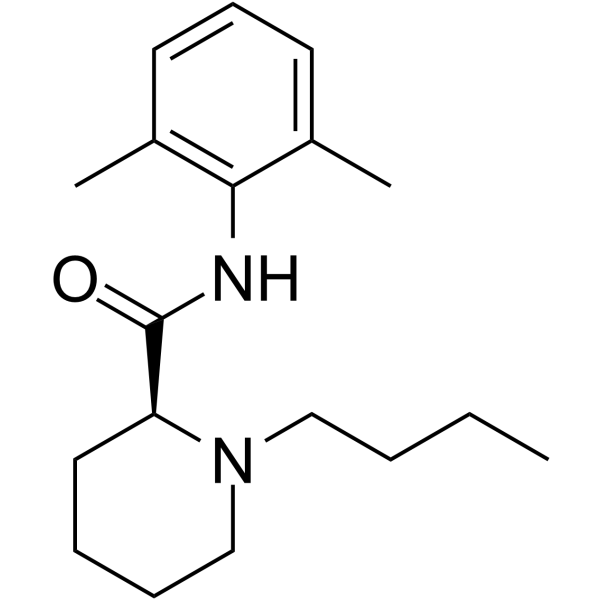
-
- HY-N6023
-
|
|
Cytochrome P450
|
Others
|
|
Thermopsoside is a flavone derivative isolated from Aspalathus linearis. Thermopsoside exhibits inhibitory effects on CYP450 isozymes with IC50 values of 6.0 μM, 9.5 μM, 12.0 μM, 32.0 μM, for CYP3A4, CYP2C19, CYP2D6 and CYP2C9, respectively .
|
-
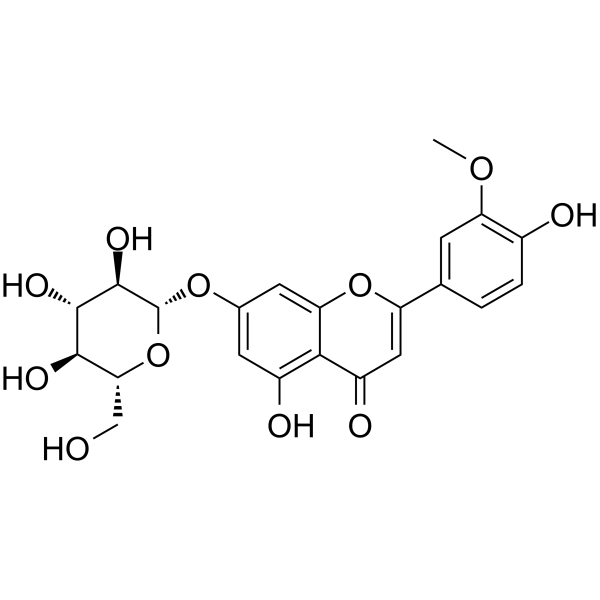
-
- HY-30152
-
-
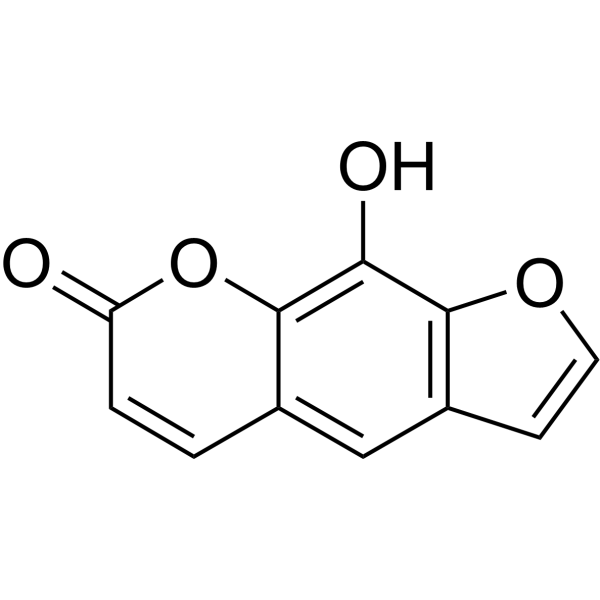
-
- HY-W016034
-
|
p-Acetamidophenyl β-D-glucuronide sodium salt; p-AAPG sodium salt
|
Others
|
Infection
|
|
Acetaminophen glucuronide is a safe and effective
antipyretic analgesic. Acetaminophen glucuronide is potentially toxic to liver
and kidney .
|
-
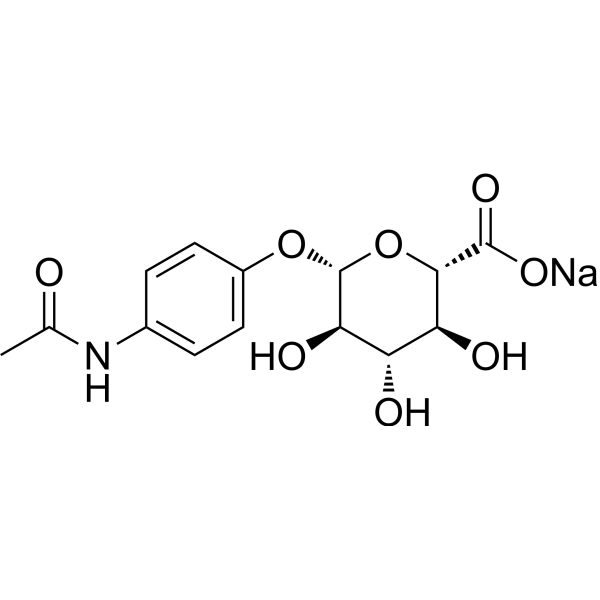
-
- HY-G0004
-
-
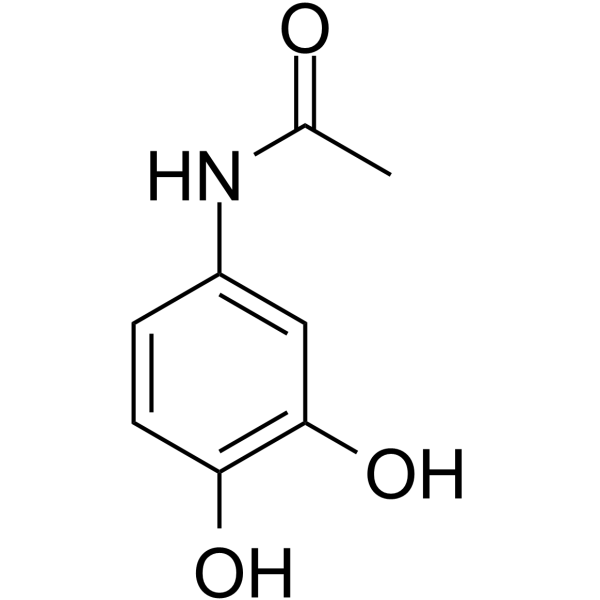
-
- HY-10965
-
|
KW-3902
|
Adenosine Receptor
|
Neurological Disease
|
|
Rolofylline (KW-3902) is a potent, selective adenosine A1 receptor antagonist that is under development for the treatment of patients with acute congestive heart failure and renal impairment.
Rolofylline is metabolized primarily to the pharmacologically active M1-trans and M1-cis metabolites by cytochrome P450 (CYP450) .
Rolofylline is alleviating the presynaptic dysfunction and restores neuronal activity as well as dendritic spine levels in vitro, is an interesting candidate to combat the hypometabolism and neuronal dysfunction associated with Tau-induced neurodegenerative diseases .
|
-
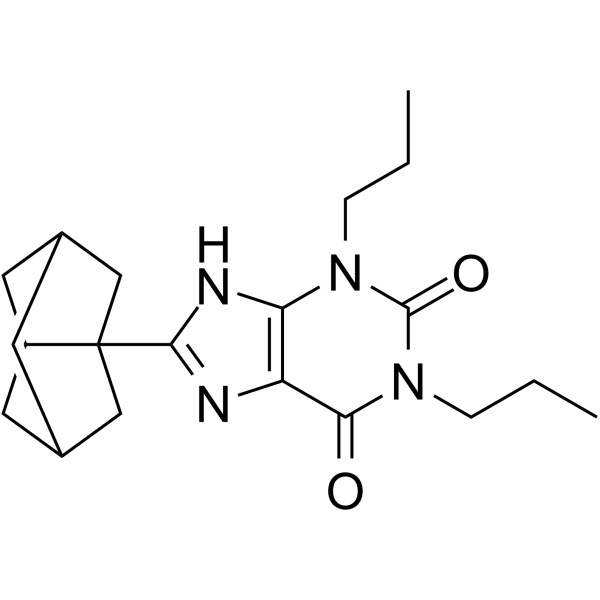
-
- HY-66006S
-
-
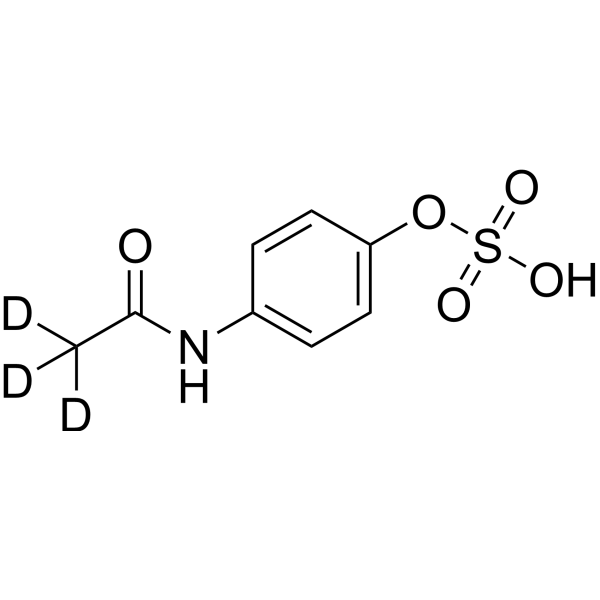
-
- HY-66006AS
-
-

-
- HY-101016
-
|
|
|
|
|
17-ODYA is a CYP450 ω-hydroxylase inhibitor. 17-ODYA is also a potent inhibitor (IC50<100 nM) of the formation of 20-hydroxyeicosatetraenoic acid (20-HETE), epoxyeicosatrienoic acids and dihydroxyeicosatrienoic acids by rat renal cortical microsomes incubated with arachidonic acid. 17-ODYA completely attenuates the isoproterenol (ISO)-induced apoptosis, and necrosis in cultured cardiomyocytes . 17-ODYA is a click chemistry reagent, it contains an Alkyne group and can undergo copper-catalyzed azide-alkyne cycloaddition (CuAAc) with molecules containing Azide groups.
|
-
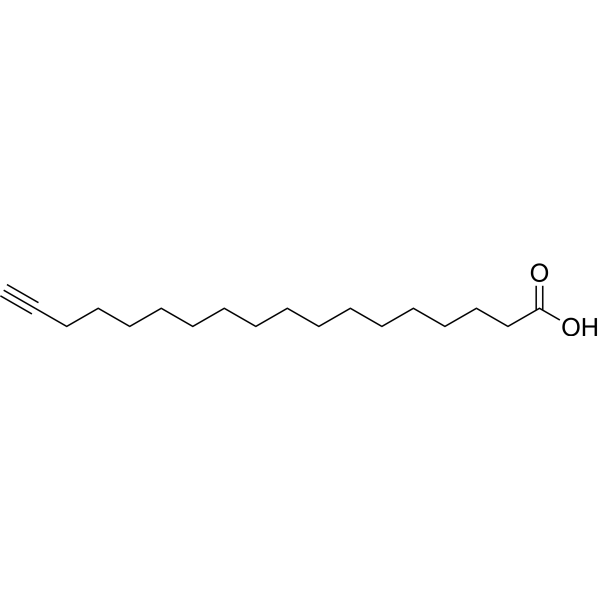
-
- HY-66005S
-
|
|
COX
Histone Acetyltransferase
Endogenous Metabolite
|
Inflammation/Immunology
|
|
Acetaminophen-d4 is the deuterium labeled Acetaminophen. Acetaminophen (Paracetamol) is a selective cyclooxygenase-2 (COX-2) inhibitor with an IC50 of 25.8 μM; is a widely used antipyretic and analgesic agent[1][2][3]. Acetaminophen is a potent hepatic N-acetyltransferase 2 (NAT2) inhibitor[4].
|
-
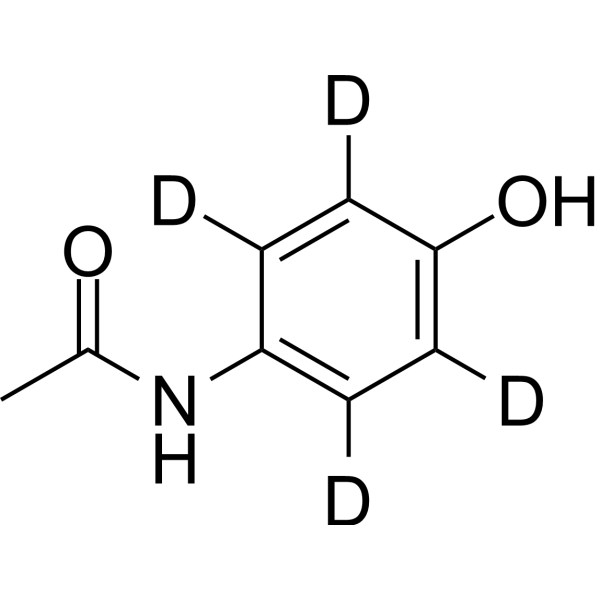
-
- HY-141736S
-
-
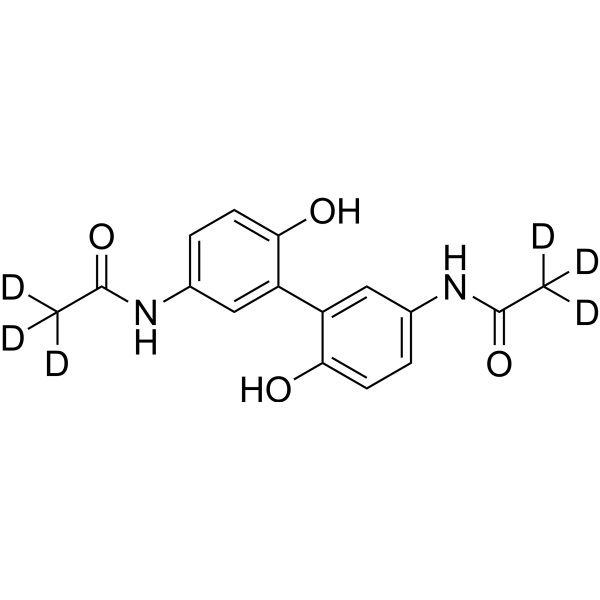
-
- HY-143911S
-
-
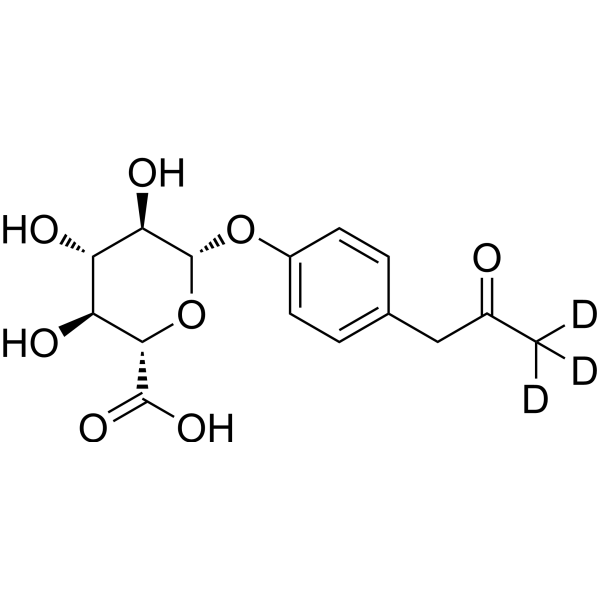
-
- HY-113083
-
|
APAP-glu
|
Drug Metabolite
Endogenous Metabolite
|
Others
|
|
Acetaminophen glucuronide (APAP-glu) is an inactive glucuronide metabolite of Acetaminophen (HY-66005) . Acetaminophen is a selective cyclooxygenase-2 (COX-2) inhibitor and a potent hepatic N-acetyltransferase 2 (NAT2) inhibitor .
|
-
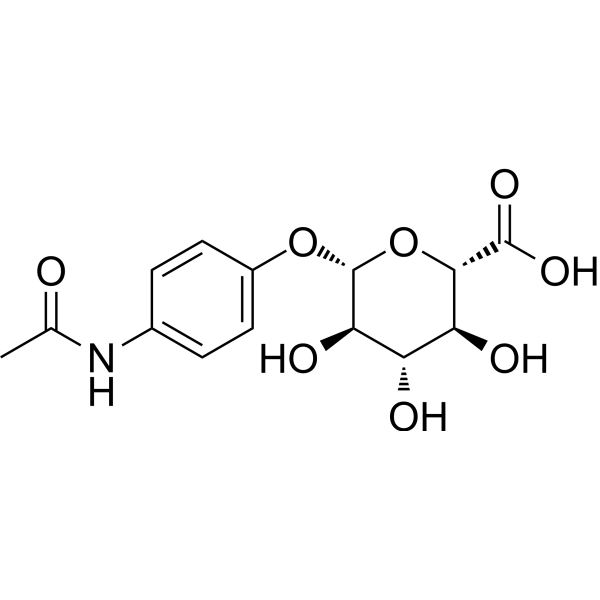
-
- HY-66005R
-
|
Paracetamol (Standard); 4-Acetamidophenol (Standard); 4'-Hydroxyacetanilide (Standard)
|
COX
Histone Acetyltransferase
Endogenous Metabolite
Bacterial
Parasite
|
Inflammation/Immunology
Cancer
|
|
Acetaminophen (Standard) is the analytical standard of Acetaminophen. This product is intended for research and analytical applications. Acetaminophen (Paracetamol) is a selective cyclooxygenase-2 (COX-2) inhibitor with an IC50 of 25.8 μM; is a widely used antipyretic and analgesic agent . Acetaminophen is a potent hepatic N-acetyltransferase 2 (NAT2) inhibitor .
|
-
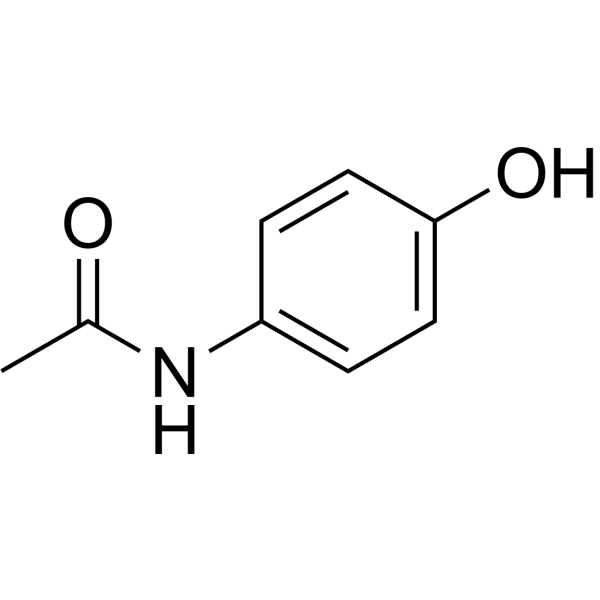
-
- HY-66005
-
-

-
- HY-W016034S
-
|
p-Acetamidophenyl β-D-glucuronide-d3 sodium salt; p-AAPG-d3 sodium salt
|
Isotope-Labeled Compounds
|
Others
|
|
Acetaminophen glucuronide-d3 sodium salt is the deuterium labeled Acetaminophen glucuronide sodium salt.
|
-
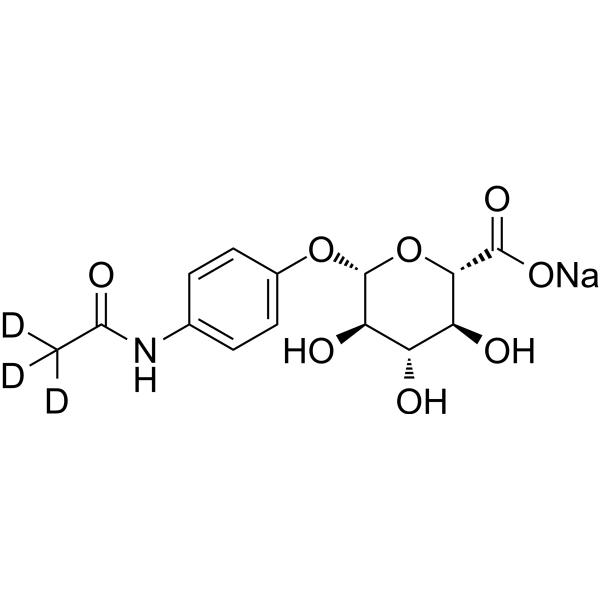
-
- HY-66005S2
-
|
Paracetamol-d7; 4-Acetamidophenol-d7; 4'-Hydroxyacetanilide-d7
|
COX
Endogenous Metabolite
Histone Acetyltransferase
|
Inflammation/Immunology
|
|
Acetaminophen-d7 is the deuterium labeled Acetaminophen. Acetaminophen (Paracetamol) is a selective cyclooxygenase-2 (COX-2) inhibitor with an IC50 of 25.8 μM; is a widely used antipyretic and analgesic agent. Acetaminophen is a potent hepatic N-acetyltransferase 2 (NAT2) inhibitor.
|
-
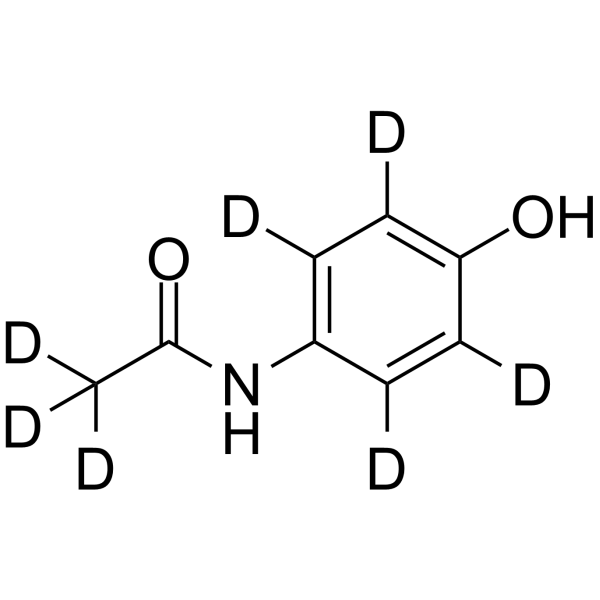
-
- HY-66005S1
-
|
Paracetamol-d3; 4-Acetamidophenol-d3; 4'-Hydroxyacetanilide-d3
|
COX
Histone Acetyltransferase
Endogenous Metabolite
|
Inflammation/Immunology
|
|
Acetaminophen-d3 is the deuterium labeled Acetaminophen. Acetaminophen (Paracetamol) is a selective cyclooxygenase-2 (COX-2) inhibitor with an IC50 of 25.8 μM; is a widely used antipyretic and analgesic agent[1][2][3]. Acetaminophen is a potent hepatic N-acetyltransferase 2 (NAT2) inhibitor[4].
|
-
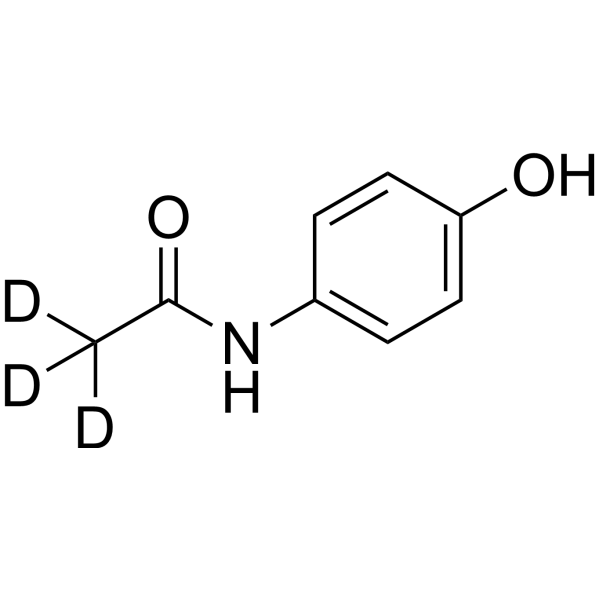
-
- HY-P3690
-
|
|
Proteasome
|
Others
|
|
Ac-Leu-Leu-Norleucinol (ALLN) is a calpain inhibitor, can be used for research of Acetaminophen (HY-66005) induced acute liver damage, and lowers glutamic-oxalacetic transaminease (ALT) and glutamic-pyruvic transaminase (AST) .
|
-
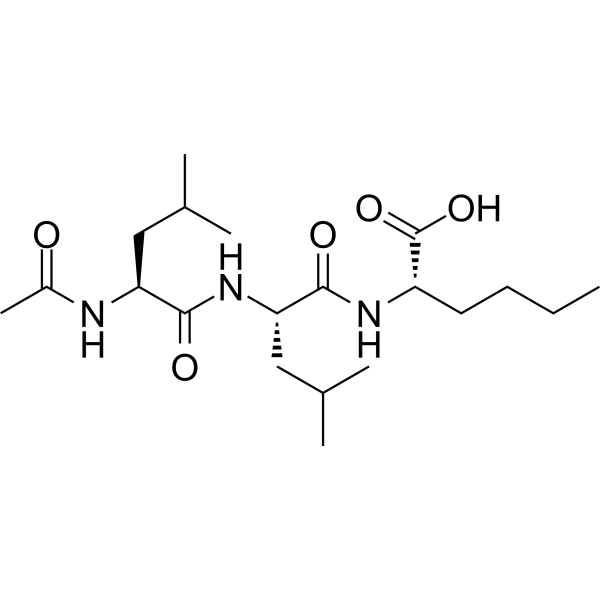
-
- HY-66005S4
-
|
Paracetamol-13C2,15N; 4-Acetamidophenol-13C2,15N; 4'-Hydroxyacetanilide-13C2,15N
|
COX
Bacterial
Histone Acetyltransferase
Parasite
Endogenous Metabolite
|
|
|
Acetaminophen- 13C2, 15N is the 13C and 15N labeled Acetaminophen[1]. Acetaminophen (Paracetamol) is a selective cyclooxygenase-2 (COX-2) inhibitor with an IC50 of 25.8 μM;is a widely used antipyretic and analgesic agent[2][3][4]. Acetaminophen is a potent hepatic N-acetyltransferase 2 (NAT2) inhibitor[5].
|
-
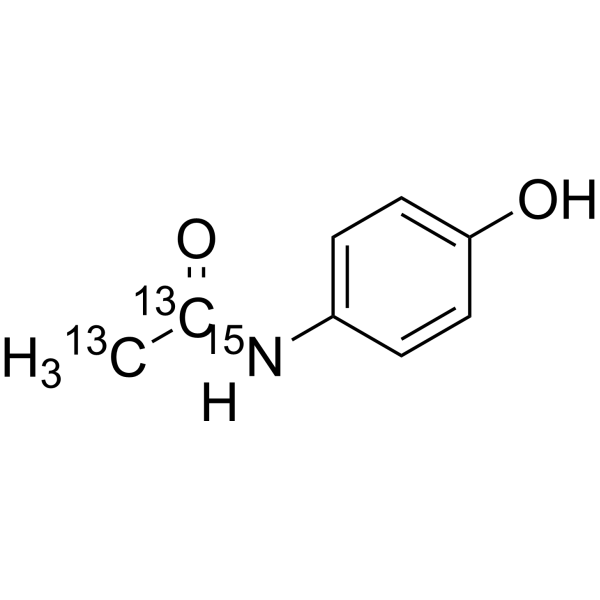
-
- HY-113381
-
|
α-Hydroxybutyric acid
|
Endogenous Metabolite
|
Metabolic Disease
Inflammation/Immunology
|
|
2-Hydroxybutyric acid (α-Hydroxybutyric acid ) is converted from 2-Aminobutyric acid, with 2-oxobutyric acid as an intermediate metabolite . 2-Hydroxybutyric acid is a potential biomarker for type 2 diabetes and preeclampsia . 2-Hydroxybutyric acid prevents the acetaminophen (AP)-induced liver injury .
|
-
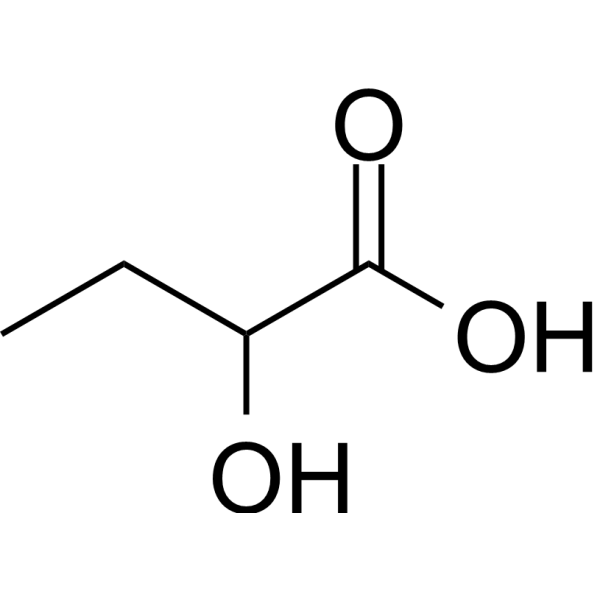
-
- HY-135325
-
|
|
Drug Metabolite
|
Inflammation/Immunology
|
|
4-Hydroxyacetophenone oxime is an impurity of Acetaminophen (Paracetamol). Acetaminophen is a potent cyclooxygenase-2 (COX-2) and hepatic N-acetyltransferase 2 (NAT2) inhibitor, and used antipyretic and analgesic agent .
|
-
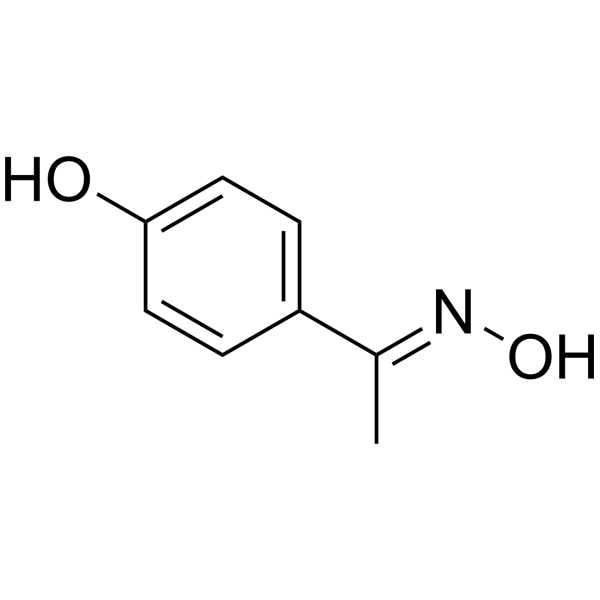
-
- HY-66004
-
|
|
Bacterial
Parasite
|
Inflammation/Immunology
Cancer
|
|
4-Acetamidophenyl acetate is an impurity of Acetaminophen (paracetamol). Acetaminophen, an analgesic agent, is a selective COX-2 inhibitor (IC50=25.8 μM), and is a potent hepatic N-acetyltransferase 2 (NAT2) inhibitor .
|
-
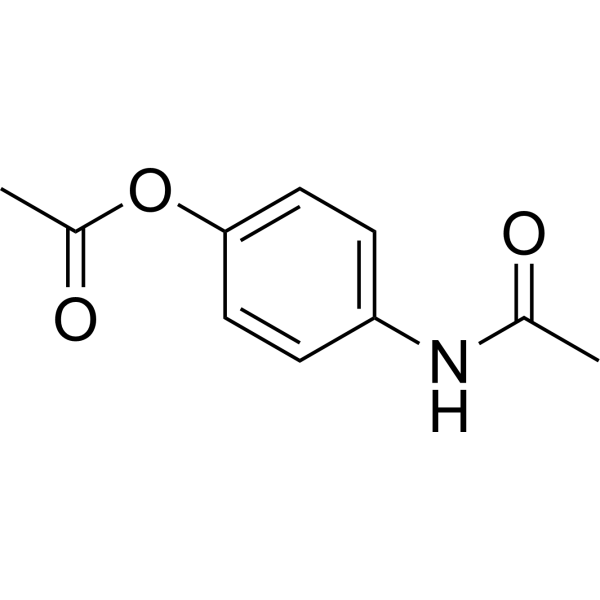
-
- HY-124750
-
-
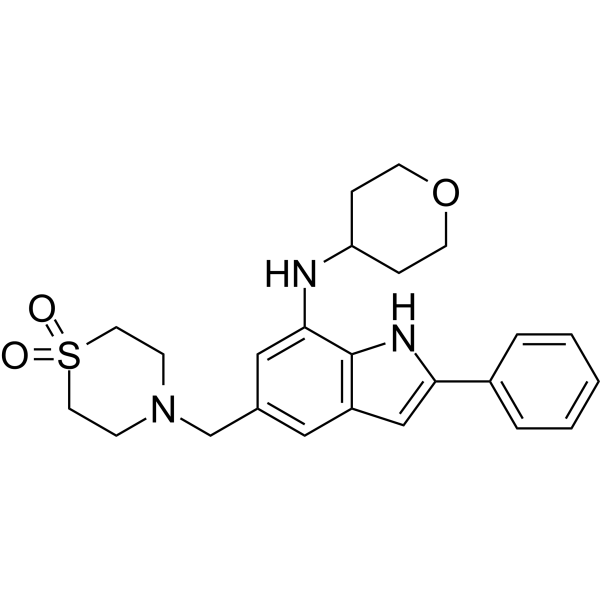
-
- HY-66004R
-
|
|
Bacterial
Parasite
|
Inflammation/Immunology
Cancer
|
|
4-Acetamidophenyl acetate (Standard) is the analytical standard of 4-Acetamidophenyl acetate. This product is intended for research and analytical applications. 4-Acetamidophenyl acetate is an impurity of Acetaminophen (paracetamol). Acetaminophen, an analgesic agent, is a selective COX-2 inhibitor (IC50=25.8 μM), and is a potent hepatic N-acetyltransferase 2 (NAT2) inhibitor .
|
-
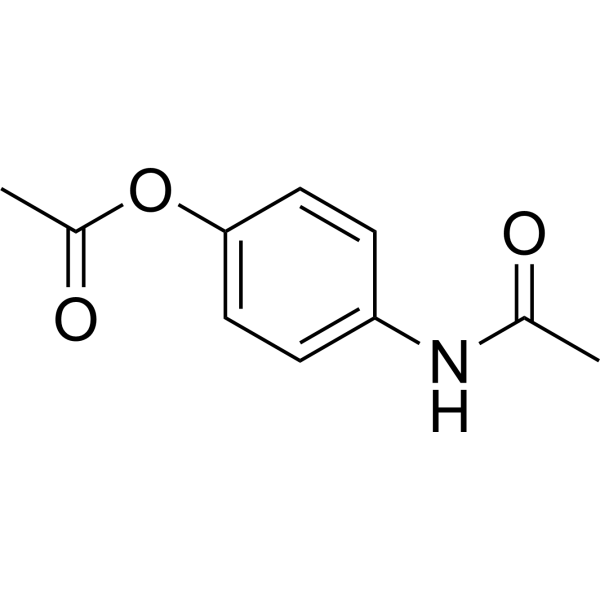
-
- HY-156436
-
|
|
Others
|
Inflammation/Immunology
|
|
Anti-inflammatory agent 62 is an anti-inflammatory agent. Anti-inflammatory agent 62 alleviate Acetaminophen-induced hepatotoxicity in HepG2 by the regulation of inflammatory and oxidative stress pathways .
|
-
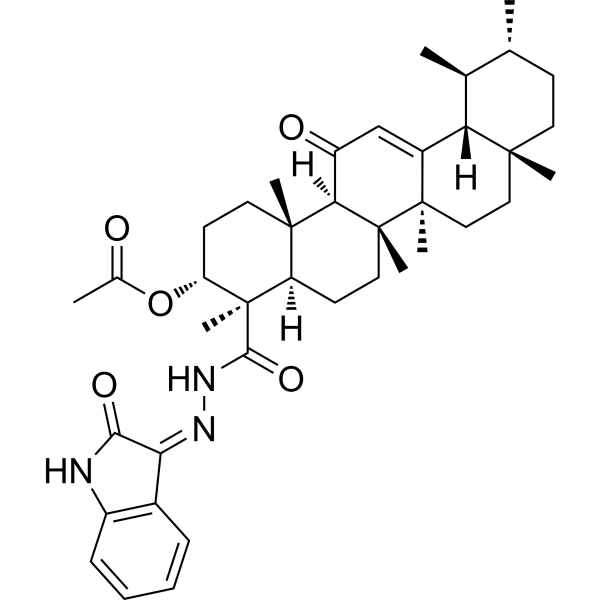
-
- HY-N2109
-
|
|
Others
|
Metabolic Disease
|
|
Macranthoidin A is an orally active saponin from Flos Lonicerae. Macranthoidin A possess protection effects on hepatic injury caused by Acetaminophen, Cd, and CCl4, and conspicuous depressant effects on swelling of ear croton oil .
|
-
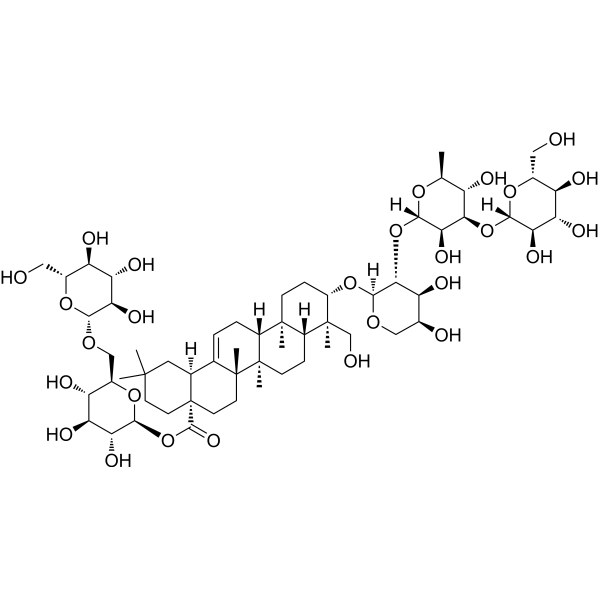
-
- HY-N4063
-
|
|
FXR
|
Inflammation/Immunology
|
|
Hedragonic acid is an oleane-type triterpenoid compound, which can be isolated from the stems and roots of the southern snake vine. Hedragonic acid is a ligand and agonist for FXR. Hedragonic acid protected mice from liver damage caused by acetaminophen overdose and reduced liver inflammation .
|
-
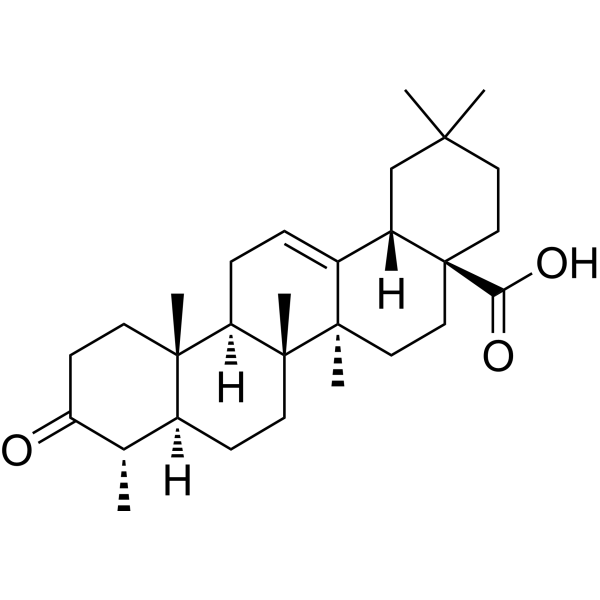
-
- HY-W017464
-
|
|
Drug Metabolite
Endogenous Metabolite
|
Metabolic Disease
|
|
NAPQI is the toxic metabolite of Acetaminophen (HY-66005). NAPQI is also an inhibitor of enzymes in the vitamin K cycle. NAPQI is rapidly detoxified by glutathione (GSH), but in situations of GSH deficiency, excess NAPQI reacts with cysteine residues in proteins, causing cell death and toxicity in the liver .
|
-

-
- HY-N12016
-
|
|
Others
|
Metabolic Disease
|
|
Fulvotomentoside B is a saponin isolated from Lactobacillus flavus. Fulvotomentoside compounds can significantly reduce serum glutamate pyruvate transaminase (SGPT) and triacylglycerol (GT) levels in mice poisoned by CCl4, d-galactosamine (d-gal) and acetaminophen, and significantly alleviate liver pathology. damage .
|
-
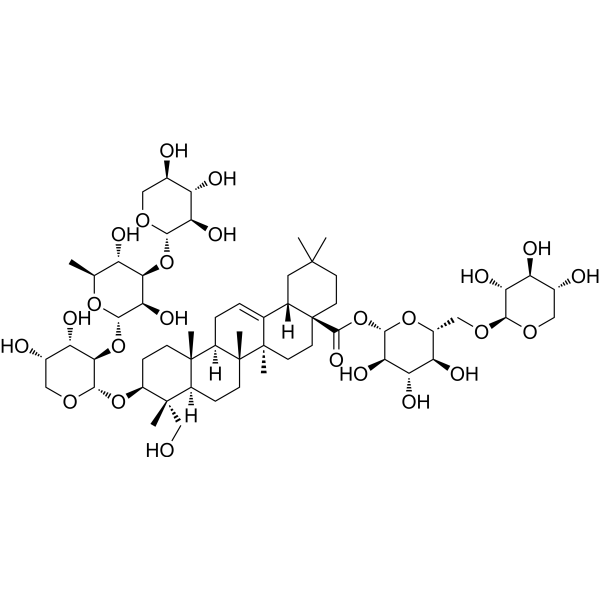
-
- HY-131349
-
|
|
CCR
|
Cancer
|
|
CCR4-351 is an orally active, potent and selective CCR4 antagonist. CCR4-351, featuring a novel piperidinyl-azetidine motif, has IC50s of 22 nM and 50 nM in the calcium flux and CTX assay. CCR4-351 has antitumor activity .
|
-
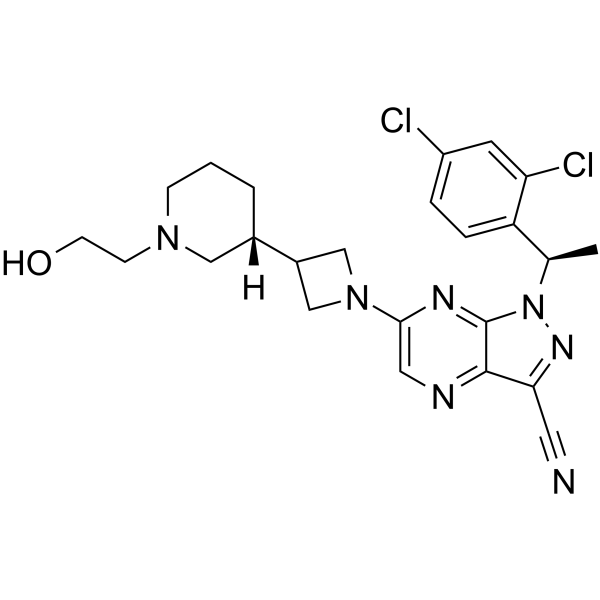
- HY-131349A
-
|
|
CCR
|
Metabolic Disease
Cancer
|
|
CCR4-351 hydrochloride is an orally active, potent and selective CCR4 antagonist. CCR4-351 hydrochloride, featuring a novel piperidinyl-azetidine motif, has IC50s of 22 nM and 50 nM in the calcium flux and CTX assay. CCR4-351 hydrochloride has antitumor activity .
|
-
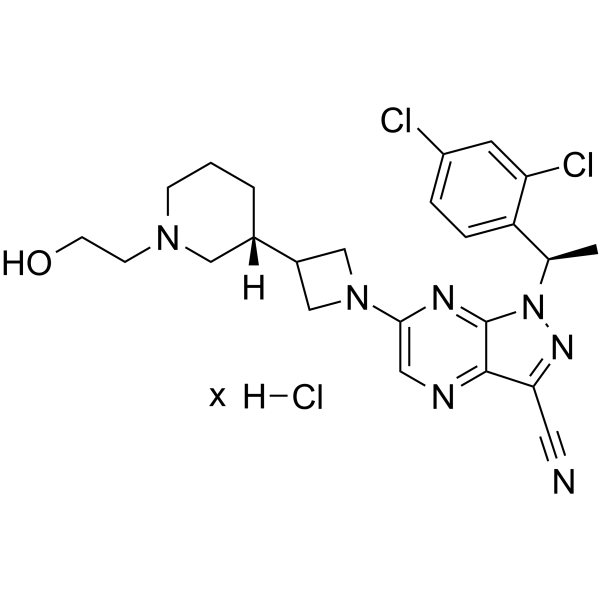
- HY-W010800
-
|
Cholesterol hydrogen succinate
|
Topoisomerase
DNA/RNA Synthesis
Apoptosis
Necroptosis
|
Cancer
|
|
Cholesteryl hemisuccinate is a with hepatoprotective an anticancer activity. Cholesteryl hemisuccinate inhibits Acetaminophen (AAP, HY-66005) hepatotoxicity, and prevents AAP-induced hepatic apoptosis and necrosis. Cholesteryl hemisuccinate inhibits DNA polymerase and DNA topoisomerase to inhibit DNA replication and repair and cell division. Thus, Cholesteryl hemisuccinate inhibits tumor growth .
|
-
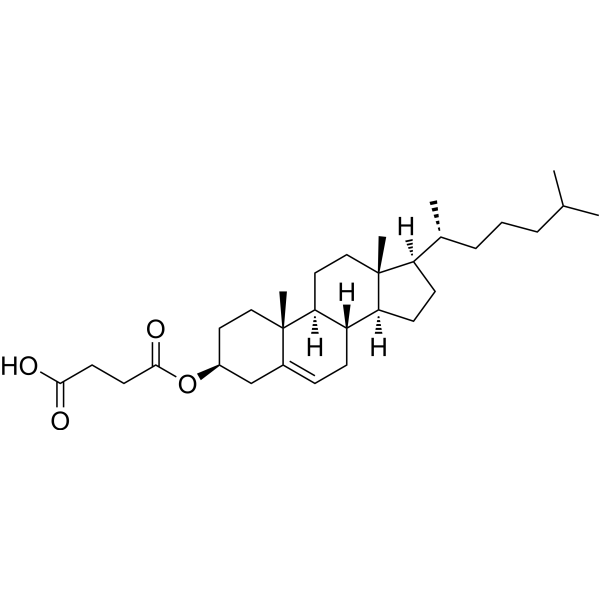
- HY-130419
-
|
13,14-EpDPE
|
Others
|
Cardiovascular Disease
Neurological Disease
|
|
(±)13(14)-EpDPA (13,14-EpDPE) is the product of the reaction of cytochrome P-450 epoxygenase with Docosahexaenoic Acid (DHA).(±)13(14)-EpDPA has antihyperalgesic and vasorelaxative activities .
|
-
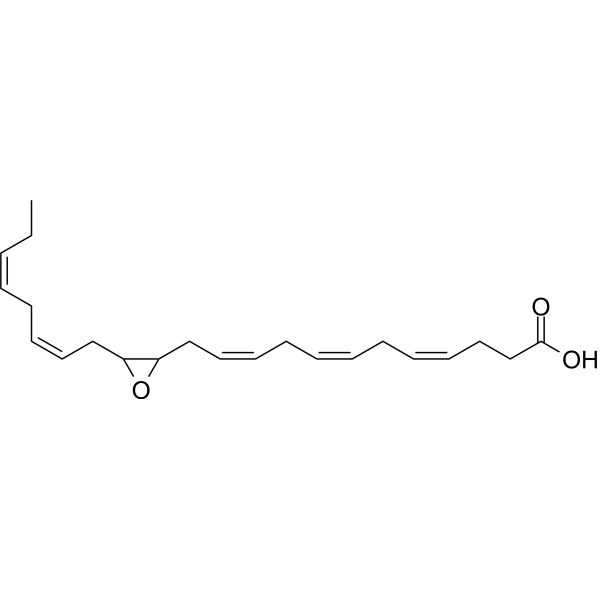
- HY-145733
-
|
|
E1/E2/E3 Enzyme
|
Cardiovascular Disease
|
|
DI-1859 is a potent, selective and covalent inhibitor of DCN1. DI-1859 inhibits neddylation of cullin 3 in cells at low nanomolar concentrations. DI-1859 induces a robust increase of NRF2 protein, a CRL3 substrate, in mouse liver and effectively protects mice from acetaminophen-induced liver damage .
|
-
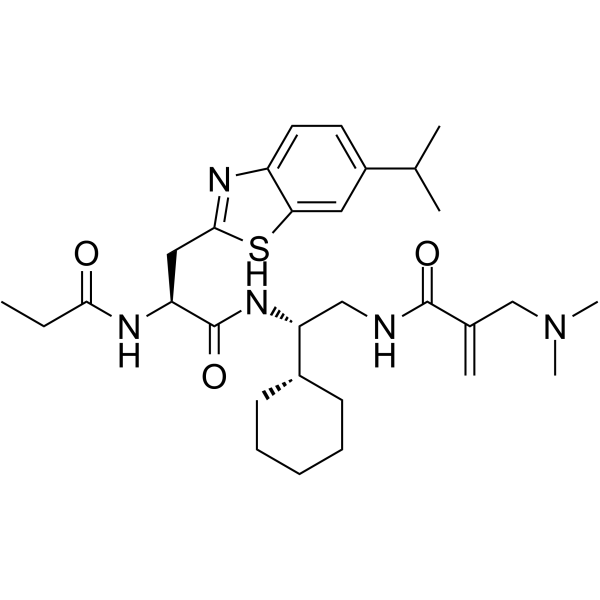
- HY-121983
-
|
|
Phospholipase
|
Cancer
|
|
CAY10594 is a potent phospholipase D2 (PLD2) inhibitor both in vitro (IC50=140 nM) and in cells (IC50=110 nM) . CAY10594 strongly inhibits the invasive migration of breast cancer cells in vitro and ameliorates acetaminophen-induced acute liver injury by regulating the phosphorylated-GSK-3β/JNK axis .
|
-
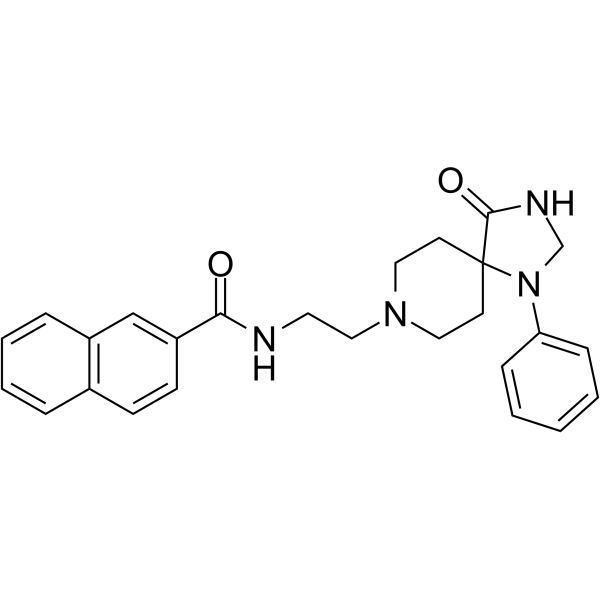
- HY-113906A
-
|
|
GHSR
|
Inflammation/Immunology
|
|
(αR,8aS)-GSK1614343 (compound 18a, d2) is a cyclized ghrelin antagonist with an pIC50 value of 8.4. (αR,8aS)-GSK1614343 shows a competitive antagonism of hGHSR1a with a mean pKb value of 8.06 .
|
-
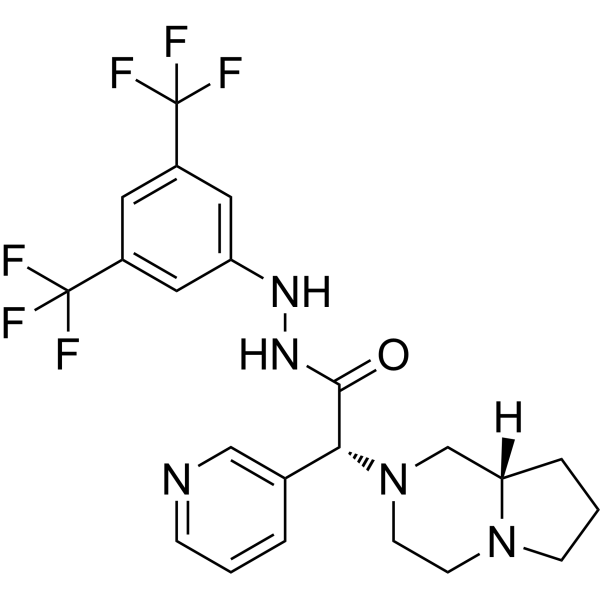
- HY-118607
-
|
|
Potassium Channel
Parasite
|
Infection
|
|
VU041 is a first submicromolar-affinity inhibitor of Anopheles (An.) gambiae and Aedes (Ae.) aegypti inward rectifier potassium 1 (Kir1) channels with IC50 values of 2.5 μM and 1.7 μM, respectively. VU041 inhibits appreciably is mammalian Kir2.1 (IC50 of 12.7 μM), and has less inhibitory effect on mammalian Kir1.1, Kir4.1, Kir6.2/SUR1, and Kir7.1. VU041 also induces impaired Malpighian tubule function .
|
-
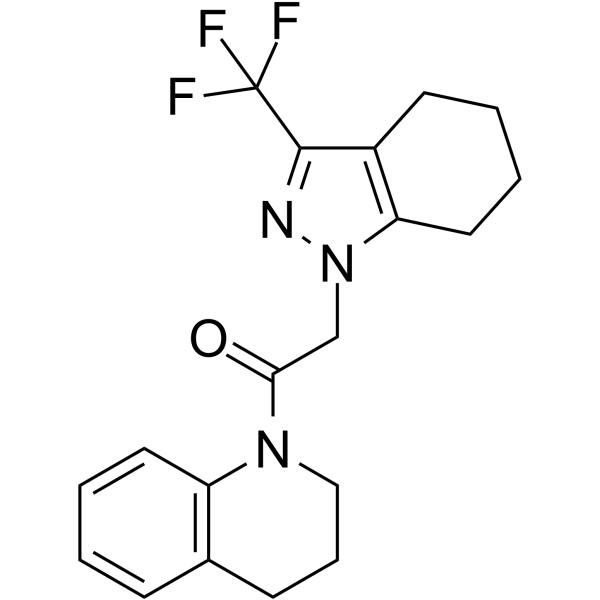
- HY-161350
-
-
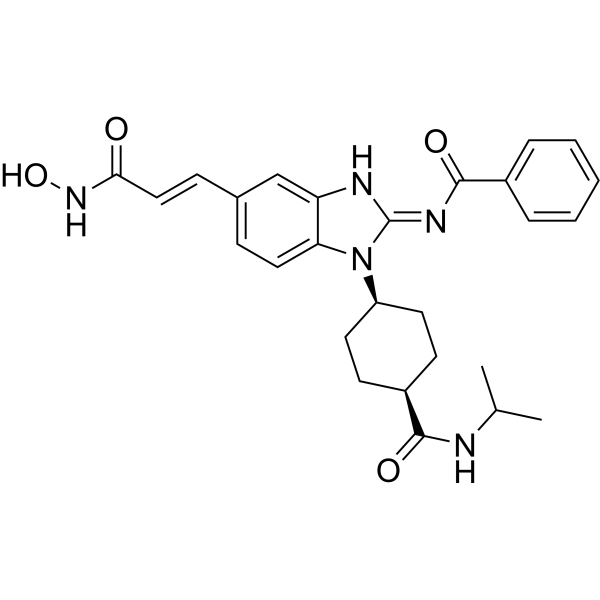
- HY-P4146
-
|
BI 456906
|
GLP Receptor
GCGR
|
Metabolic Disease
|
|
Survodutide (BI 456906) is a potent, selective glucagon receptor/GLP-1 receptor (GCGR/GLP-1R) dual agonist with EC50s of 0.52 nM and 0.33 nM in CHO-K1 cells, respectively. Survodutide, a 29-amino-acid peptide, is a potent acylated peptide containing a C18 fatty acid. Survodutide has robust anti-obesity efficacy achieved by increasing energy expenditure and decreasing food intake .
|
-
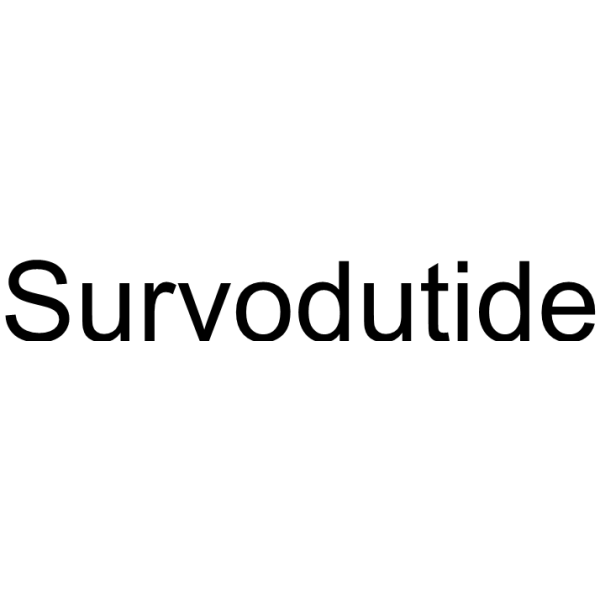
- HY-P4146A
-
|
BI 456906 TFA
|
GLP Receptor
GCGR
|
Metabolic Disease
|
|
Survodutide (BI 456906) TFA is a potent, selective glucagon receptor/GLP-1 receptor (GCGR/GLP-1R) dual agonist with EC50s of 0.52 nM and 0.33 nM in CHO-K1 cells, respectively. Survodutide TFA, a 29-amino-acid peptide, is a potent acylated peptide containing a C18 fatty acid. Survodutide TFA has robust anti-obesity efficacy achieved by increasing energy expenditure and decreasing food intake .
|
-
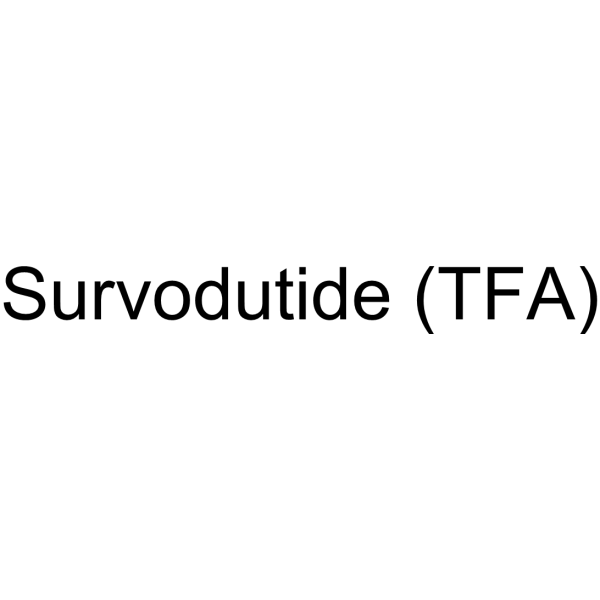
- HY-P2434
-
|
|
Somatostatin Receptor
|
Neurological Disease
Metabolic Disease
Cancer
|
|
AP102 is a dual SSTR2/SSTR5-specific somatostatin analog (SSA). AP102 is a disulfide-bridged octapeptide SSA containing synthetic iodinated amino acids. AP102 binds with subnanomolar affinity to SSTR2 and SSTR5 (IC50: 0.63 and 0.65 nM, respectively). AP102 does not bind to SSTR1 or SSTR3. AP102 can be used for acromegaly and neuroendocrine tumors research .
|
-
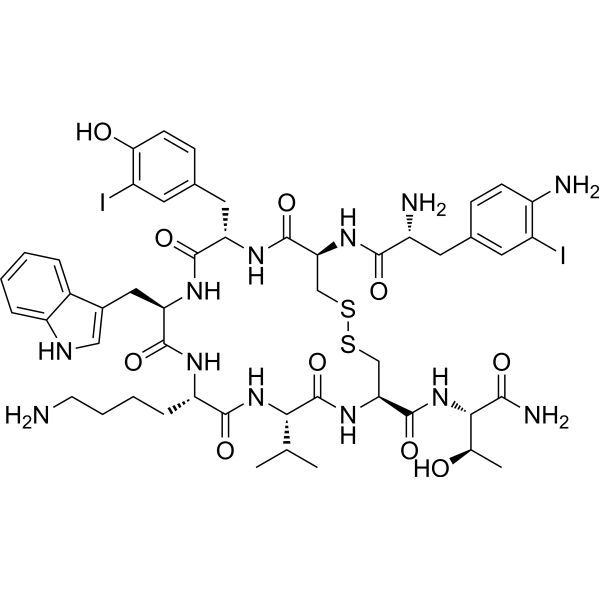
- HY-P5362
-
|
|
Somatostatin Receptor
|
Cancer
|
|
NODAGA-LM3 can be labeled by 68Ga for PET imaging. 68Ga-NODAGA-LM3 is a SSTR2 antagonist, and can be used for imaging of SSTR positive paragangliomas .
|
-
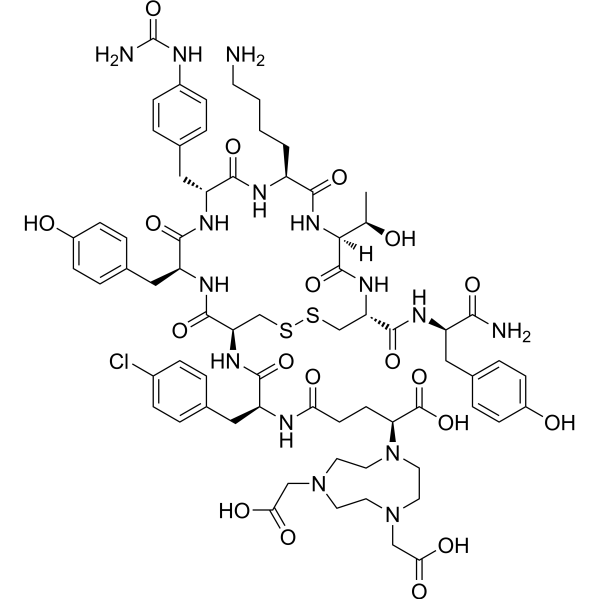
- HY-P5362A
-
|
|
Somatostatin Receptor
|
Cancer
|
|
NODAGA-LM3 TFA can be labeled by 68Ga for PET imaging. 68Ga-NODAGA-LM3 TFA is a SSTR2 antagonist, and can be used for imaging of SSTR positive paragangliomas .
|
-
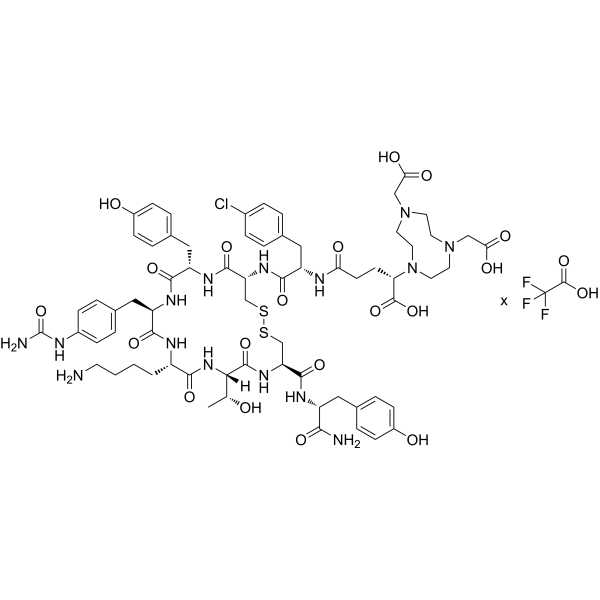
- HY-105168
-
|
|
Endothelin Receptor
|
Cardiovascular Disease
|
|
TAK 044 is an antagonist of Endothelin Receptor. TAK 044 strongly inhibits ET-induced deterioration in various animal models. TAK 044 can be used in study ET-related diseases such as acute myocardial infarction,acute renal failure, acute hepatic malfunction, and subarachnoid hemorrhage .
|
-

| Cat. No. |
Product Name |
Target |
Research Area |
-
- HY-P4146
-
|
BI 456906
|
GLP Receptor
GCGR
|
Metabolic Disease
|
|
Survodutide (BI 456906) is a potent, selective glucagon receptor/GLP-1 receptor (GCGR/GLP-1R) dual agonist with EC50s of 0.52 nM and 0.33 nM in CHO-K1 cells, respectively. Survodutide, a 29-amino-acid peptide, is a potent acylated peptide containing a C18 fatty acid. Survodutide has robust anti-obesity efficacy achieved by increasing energy expenditure and decreasing food intake .
|
-
- HY-P4146A
-
|
BI 456906 TFA
|
GLP Receptor
GCGR
|
Metabolic Disease
|
|
Survodutide (BI 456906) TFA is a potent, selective glucagon receptor/GLP-1 receptor (GCGR/GLP-1R) dual agonist with EC50s of 0.52 nM and 0.33 nM in CHO-K1 cells, respectively. Survodutide TFA, a 29-amino-acid peptide, is a potent acylated peptide containing a C18 fatty acid. Survodutide TFA has robust anti-obesity efficacy achieved by increasing energy expenditure and decreasing food intake .
|
-
- HY-P3690
-
|
|
Proteasome
|
Others
|
|
Ac-Leu-Leu-Norleucinol (ALLN) is a calpain inhibitor, can be used for research of Acetaminophen (HY-66005) induced acute liver damage, and lowers glutamic-oxalacetic transaminease (ALT) and glutamic-pyruvic transaminase (AST) .
|
-
- HY-P4757
-
|
|
Peptides
|
Others
|
|
N1-Glutathionyl-spermidine disulfide is a substrate of trypanothione reductase .
|
-
- HY-P2434
-
|
|
Somatostatin Receptor
|
Neurological Disease
Metabolic Disease
Cancer
|
|
AP102 is a dual SSTR2/SSTR5-specific somatostatin analog (SSA). AP102 is a disulfide-bridged octapeptide SSA containing synthetic iodinated amino acids. AP102 binds with subnanomolar affinity to SSTR2 and SSTR5 (IC50: 0.63 and 0.65 nM, respectively). AP102 does not bind to SSTR1 or SSTR3. AP102 can be used for acromegaly and neuroendocrine tumors research .
|
-
- HY-P5362
-
|
|
Somatostatin Receptor
|
Cancer
|
|
NODAGA-LM3 can be labeled by 68Ga for PET imaging. 68Ga-NODAGA-LM3 is a SSTR2 antagonist, and can be used for imaging of SSTR positive paragangliomas .
|
-
- HY-P5362A
-
|
|
Somatostatin Receptor
|
Cancer
|
|
NODAGA-LM3 TFA can be labeled by 68Ga for PET imaging. 68Ga-NODAGA-LM3 TFA is a SSTR2 antagonist, and can be used for imaging of SSTR positive paragangliomas .
|
-
- HY-105168
-
|
|
Endothelin Receptor
|
Cardiovascular Disease
|
|
TAK 044 is an antagonist of Endothelin Receptor. TAK 044 strongly inhibits ET-induced deterioration in various animal models. TAK 044 can be used in study ET-related diseases such as acute myocardial infarction,acute renal failure, acute hepatic malfunction, and subarachnoid hemorrhage .
|
| Cat. No. |
Product Name |
Category |
Target |
Chemical Structure |
| Cat. No. |
Product Name |
Chemical Structure |
-
- HY-B0725S
-
|
|
|
Doxepin-d3 (hydrochloride) is a deuterium labeled Doxepin Hydrochloride. Doxepin hydrochloride is an orally active tricyclic antidepressant. Doxepin hydrochloride is a potent and selective histamine receptor H1 antagonist. Doxepin hydrochloride is also a potent CYP450 inhibitor and significantly inhibits CYP450 2C19 and 1A2[1][2].
|
-

-
- HY-66005S
-
|
|
|
Acetaminophen-d4 is the deuterium labeled Acetaminophen. Acetaminophen (Paracetamol) is a selective cyclooxygenase-2 (COX-2) inhibitor with an IC50 of 25.8 μM; is a widely used antipyretic and analgesic agent[1][2][3]. Acetaminophen is a potent hepatic N-acetyltransferase 2 (NAT2) inhibitor[4].
|
-

-
- HY-133091S
-
|
|
|
7-Ethoxycoumarin-d5 is deuterium labeled 7-Ethoxycoumarin. 7-Ethoxycoumarin is a substrate for cytochrome P450(CYP450) and has been used in the functional characterization of various CYPs[1].
|
-

-
- HY-66006S
-
|
|
|
4-Acetaminophen sulfate-d3 is the deuterium labeled 4-Acetaminophen sulfate[1].
|
-

-
- HY-66006AS
-
|
|
|
4-Acetaminophen sulfate-d3 (potassium) is the deuterium labeled 4-Acetaminophen sulfate potassium[1].
|
-

-
- HY-141736S
-
|
|
|
Acetaminophen dimer-d6 is the deuterium labeled Acetaminophen dimer[1].
|
-

-
- HY-143911S
-
|
|
|
Acetaminophen glucuronide-d3 is the deuterium labeled Acetaminophen glucuronide[1].
|
-

-
- HY-W016034S
-
|
|
|
Acetaminophen glucuronide-d3 sodium salt is the deuterium labeled Acetaminophen glucuronide sodium salt.
|
-

-
- HY-66005S2
-
|
|
|
Acetaminophen-d7 is the deuterium labeled Acetaminophen. Acetaminophen (Paracetamol) is a selective cyclooxygenase-2 (COX-2) inhibitor with an IC50 of 25.8 μM; is a widely used antipyretic and analgesic agent. Acetaminophen is a potent hepatic N-acetyltransferase 2 (NAT2) inhibitor.
|
-

-
- HY-66005S1
-
|
|
|
Acetaminophen-d3 is the deuterium labeled Acetaminophen. Acetaminophen (Paracetamol) is a selective cyclooxygenase-2 (COX-2) inhibitor with an IC50 of 25.8 μM; is a widely used antipyretic and analgesic agent[1][2][3]. Acetaminophen is a potent hepatic N-acetyltransferase 2 (NAT2) inhibitor[4].
|
-

-
- HY-66005S4
-
|
|
|
Acetaminophen- 13C2, 15N is the 13C and 15N labeled Acetaminophen[1]. Acetaminophen (Paracetamol) is a selective cyclooxygenase-2 (COX-2) inhibitor with an IC50 of 25.8 μM;is a widely used antipyretic and analgesic agent[2][3][4]. Acetaminophen is a potent hepatic N-acetyltransferase 2 (NAT2) inhibitor[5].
|
-

Your information is safe with us. * Required Fields.
Inquiry Information
- Product Name:
- Cat. No.:
- Quantity:
- MCE Japan Authorized Agent:








































































